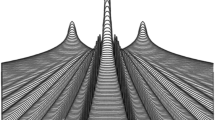Abstract.
This essay surveys the work of John Stewart Bell, one of the great physicists of the twentieth century. Section 1 is a brief biography, tracing his career from working-class origins and undergraduate training in Belfast, Northern Ireland, to research in accelerator and nuclear physics in the British national laboratories at Harwell and Malvern, to his profound research on elementary particle physics as a member of the Theory Group at CERN and his equally profound “hobby” of investigating the foundations of quantum mechanics. Section 2 concerns this hobby, which began in his discontent with Bohr's and Heisenberg's analyses of the measurement process. He was attracted to the program of hidden variables interpretations, but he revolutionized the foundations of quantum mechanics by a powerful negative result: that no hidden variables theory that is “local” (in a clear and well-motivated sense) can agree with all the correlations predicted by quantum mechanics regarding well-separated systems. He further deepened the foundations of quantum mechanics by penetrating conceptual analyses of results concerning measurement theory of von Neumann, de Broglie and Bohm, Gleason, Jauch and Piron, Everett, and Ghirardi-Rimini-Weber. Bell's work in particle theory (Section 3) began with a proof of the CPT theorem in his doctoral dissertation, followed by investigations of the phenomenology of CP-violating experiments. At CERN Bell investigated the commutation relations in current algebras from various standpoints. The failure of current algebra combined with partially conserved current algebra to permit the experimentally observed decay of the neutral pi-meson into two photons stimulated the discovery by Bell and Jackiw of anomalous or quantal symmetry breaking, which has numerous implications for elementary particle phenomena. Other late investigations of Bell on elementary particle physics were bound states in quantum chromodynamics (in collaboration with Bertlmann) and estimates for the anomalous magnetic moment of the muon (in collaboration with de Rafael). Section 4 concerns accelerations, starting at Harwell with the algebra of strong focusing and the stability of orbits in linear accelerators and synchrotrons. At CERN he continued to contribute to accelerator physics, and with his wife Mary Bell he wrote on electron cooling and Beamstrahlung. A spectacular late achievement in accelerator physics was the demonstration (in collaboration with Leinaas) that the effective black-body radiation seen by an accelerated observer in an electromagnetic vacuum – the “Unruh effect”– had already been observed experimentally in the partial depolarization of electrons traversing circular orbits.
Similar content being viewed by others
Author information
Authors and Affiliations
Rights and permissions
About this article
Cite this article
Jackiw, R., Shimony, A. In Appreciation¶The Depth and Breadth of John Bell's Physics. Phys. perspect. 4, 78–116 (2002). https://doi.org/10.1007/s00016-002-8359-3
Issue Date:
DOI: https://doi.org/10.1007/s00016-002-8359-3




